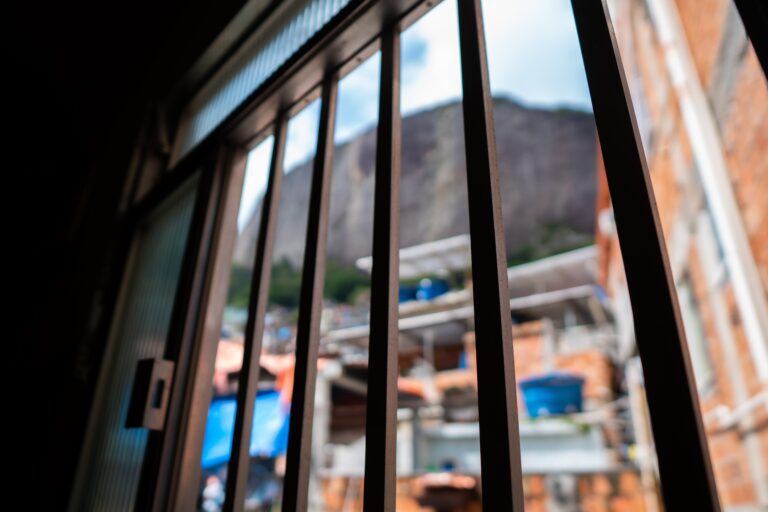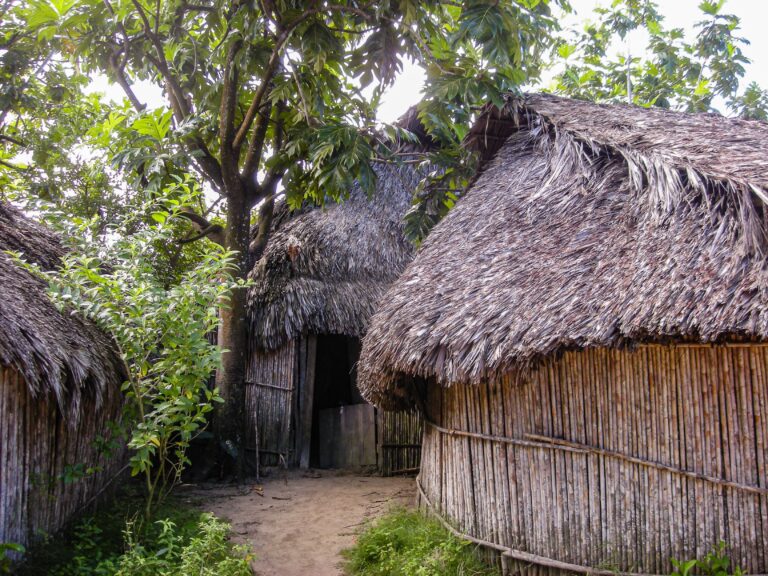I asked for directions to a school I was invited to speak in. After being guided, I was told, “yuh cyah miss it, the wall high like a prison!”. As I entered the school, the security guards wanted to know the purpose of my visit. I explained the reason I was there and the name of the teacher whom I was in contact with. They called the staff room to verify. As I waited, the security officers searched each bag of students as they entered the compound; three officers doing their searches in this iron and concrete jungle. The teacher walked out front and signed me in. Without sharing my experience, she began apologizing for the usual hostility of the guards because they are known to be indiscriminate their aggression. I asked her about the major issues facing the school; she said, “In here is the worst. They don’t respect teachers. They fight. Persons from outside the school fight them. And the speak violently toward each other.”
Our country is at war with itself.
Schoolbooks fresh off the shelf but some book bags empty or worse have knives or worse have guns. We are quite certain this is a minority and enough for us to overlook when blood spills each time. This is what happens in a society that celebrates hundreds of CAPE A’Level scholarships annually of the “bestest and brightest”; this is what happens in an island where the Minister of Education makes it his business to ritually hug and congratulate the top student in primary school for S.E.A and not make a visit to many schools where students are both illiterate and innumerate and fail the exams but get placed in a secondary school. If you have been to the schools throughout this country, you would know there are two types of schools – prestige schools and not-prestige schools.
The status anxiety by parents and the processes and lengths they go to get their child into a good school is a violent disciplinary practice. The reward is hardly the child’s but the stress is entirely theirs.
For years, what we have taught and thought is that it is easier to manage and control youth but this has not worked. The surveillance architectural design of school, timetable regimes, authoritarian teaching and administrative style and increasingly militarized school environments, have not significantly dented the outcome of certified failures that eventually underperform at CXCs and reject the broader logic of education and schooling.
Students feel alienated from the learning material because it is disconnected the realities of life, especially the harsh realities. The Prime Minister on the news talking but plenty not hearin’ and quite frankly they fed up of people telling them how to behave and the Minister only come to this school when somebody dead.
There are some serious things we need to address before moving forward:
Treat school violence as a social, cultural and economic issue.
We have grown accustomed to treating school violence as a psychological issue and it has shown that pathological explanations of students’ behaviour do not address the conditions for which students work in the classroom. For this reason, the burden is not simply on the state to pay for increased guidance counselors but it is also the political problem of addressing crime in T&T of a homicide rate of 108 murders in 81 days (as at Tuesday 22nd March 2016), the economic decline that exacerbates strain in families to provide and the cultural production of violence pervasive in media.
Do not think short-term
Short-term measures will not address the fundamental organization of power. So far there have been calls for a zero tolerance approach and the presence of metal detectors and police searches do more to curb parents (legitimate) fears about school violence than transform the culture of violence itself. The illusion of security is both expensive and often further militarizes and therefore has the unintended consequence of criminalizing a number of students. An eye and a broader conversation on the socio-economic conditions of the community of the school is what must take place.
Pay more attention to mental health than marks.
Most people are concerned with children’s school marks and not their mental health. There is no discussion about children’s mental health. How are they dealing with the pressures of schooling and the stress of families under pressure? The same feelings of insecurity parents have children have. Children sit in on conversations about the murders, they see the news, and they ride the maxis in and out of unsafe communities where their schools are. Maybe this is not prevalent among middle class families who are buffered from it but we us recognize they are a small strata of the economy.
Students are members of families under economic strain, students witness violence in classrooms and in their communities, students are under stress for exams, students are under surveillance in the school – there are a plethora of challenges facing students. Each student is a walking body of emotions and the school system needs to focus of children and adolescents mental health…and not continue to overlook it at the expense of valuing marks, politeness and manners.
We do not actually know where students feel safe
What we do know is that the school is not always a safe space. Some students feel safe in their houses but not all. Some feel safe on the street but chances are not most because it depends on where you live. A few students might feel safe in schools but this is often not the case in many government secondary schools. Teachers also feel unsafe in these environments where students expose them to persistent threats and their teaching ability in the classroom is undermined.
Sexual Harassment is Violence
What do constant feelings of insecurity result in, especially for girls who are particularly looked at by men from the time they are 7 or 8 years old? There is a tendency for us to overlook how gender relations organize our lives; and the idea of violence is seen strictly in terms of guns, gangs and guys. By the time many young girls bodies’ develop they are not only victim to the eyes of wolfish and thusty (older) men but also sexual harassment in the school. The school, especially secondary school, is a site of gender inequalities of unrelenting sexual harassment that attacks the dignity of many young girls, may lead to public ceremonies of humiliation, pressures them to lash out against other male students or worse come to understand that harassment as normal.
It’s not just bullying…It is violent masculinities
Unless we come to terms with the fact that many young boys perform violent masculinities that gives them status, rank and stripes then we miss the point of what is happening. The saying boys will be boys excuses aggressive and violent behaviours of young boys that linger into adolescence and adulthood. If a serious discussion of the patriarchal order of male violence is not on the table then we are not serious in examining the reality of male academic underachievement.
Homophobic Violence
There is a teacher in Naparima College who wants a gun for atheists and homosexuals because it is ‘wrong’. Fortunately, the students and alumni had enough influence to tell her and the school administration that homophobic statements are not okay. However, we do know that in school with less prestigious alumni, less ‘status’ behind their name and no media attention, homophobic violence happens day in and day out and youth suffer in silence.
This not a question about good and bad students.
How do we build a safe community of our schools?
What would an education without fear look like?
On Friday 1st April 2016, UWI SSC will mobilise students from across the country to be part a movement to begin answering these questions.
#BooksNotDeath
Click for further reading:
Dr. Gabrielle Hosein’s take on Education >




